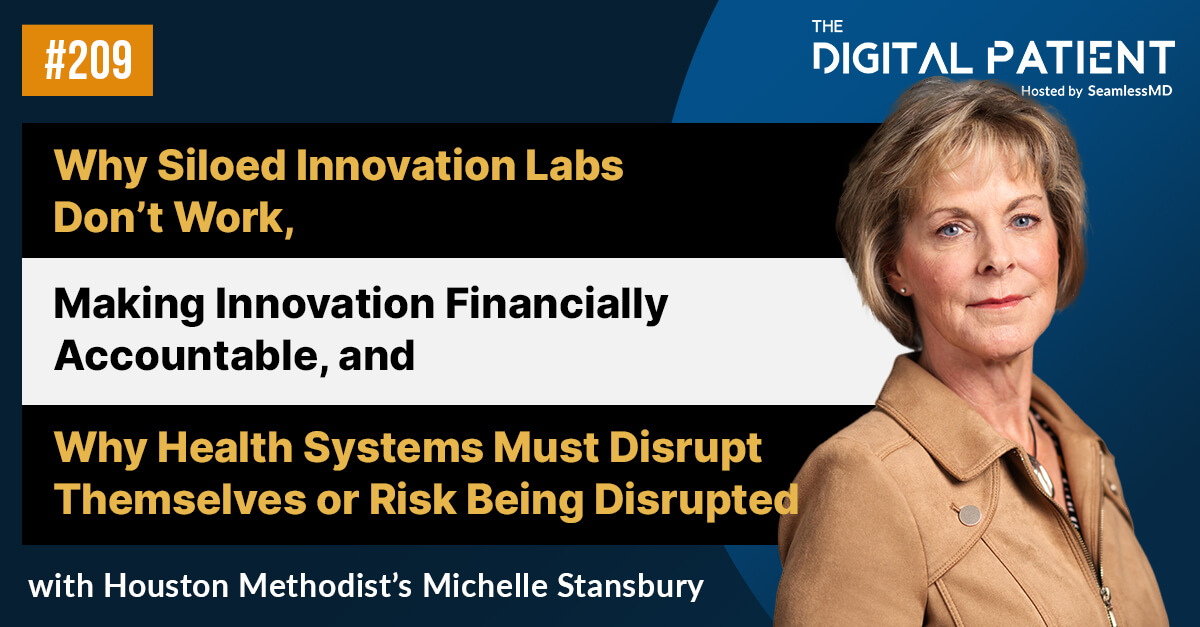The healthcare journey can be a confusing, overwhelming, and long process for patients. Many may be undergoing surgery for the first time, which can be extremely stressful, while chronic care patients are often faced with a lot of uncertainty, as the course of their illness can be unpredictable and the treatments used to manage their condition can be difficult to keep up with. Research suggests that over 30% of patients undergoing surgical procedures or chronic care can experience anxiety.
Meanwhile, although providers intend for patients to have a straightforward recovery, the reality is that:
- The average hospital readmission rate in the United States is 15.0% ranging from 9.9% to 22.5%, and as high as 17.7% for chronic care patients.
- Readmissions are one of the costliest areas of healthcare utilization in the United States, according to a study published by the National Library of Medicine.
- Annual costs for patients readmitted within 30 days after discharge reaches $41.3 billion in the US and $2.3 billion in Canada.
Added to these challenges is the increase in surgical wait times and backlog, along with ongoing strain on resources and staffing. Today, leading health systems and hospitals are increasingly looking at Remote Patient Monitoring (RPM) solutions as a scalable way to stay connected with patients pre- and post-discharge, decrease surgical wait times, and discharge patients sooner - all while enhancing patient education, data collection, clinical outcomes, and revenue generation.
App-based RPM solutions like Digital Care Journeys offer personalized patient experience by engaging with patients through an app on their everyday devices (smartphones, tablets, desktops, web browsers). These platforms offer condition-specific care plans and education as well as in-depth features such as alerts, personalized recommendations, symptom tracking, survey response collection, etc. Since these solutions only require an internet connection, and offer deeper integration with Electronic Health Record (EHR) systems for data interoperability, they have shown to have broader market usage and more potential use cases (e.g. surgery, oncology, chronic care, mental health, etc.), and can be implemented for organizations looking to support enterprise-wide use.
For instance, with the use of RPM, Thunder Bay Regional Health Sciences Center (TBRHSC) has reduced 30-day ED visits by 32% across Shoulder, Total Hip and Knee, Spine (Lumbar and Cervical), Cardiac Catheterization, Bariatrics, Colorectal, Urology, Gynecology, Breast Cancer, Maternity Care, and Oncology; and Grand River Hospital has seen an 89% reduction in 30-day readmissions for Hip surgery patients.
Additionally, remote monitoring solutions have shown to reduce hospital costs by $8,100 per patient and average total cost by 6.7% for specific surgery lines through improved outcomes.
You can access our whitepaper Key Benefits and Use Cases of Remote Patient Monitoring Solutions to see how a robust RPM solution can help you achieve similar results as the organizations above.
This whitepaper dives into the top seven benefits of using app-based Remote Patient Monitoring platforms, including:
- Progress tracking through automated reminders, daily check-ins and to-do-lists for patients, as well as helping patients self-report data, answer surveys etc. These features, along with being able to monitor patients via dashboards and alerts, enable care teams to watch out for early warning signs of complications as well as track patients with ongoing care needs, and intervene earlier and quicker when needed.
- Collection of data and Patient-Reported Outcomes (PROs) at scale to help measure ongoing success and achieve data driven clinical decision-making.
- Improved clinical and operational outcomes, such as reducing unnecessary hospital admissions and readmission, as well as potentially avoidable ED utilization by improving their ability to catch complications before they escalate.
The whitepaper also outlines several use cases for RPM solutions across surgical and chronic care – including maternity care, oncology, frailty, chronic disease management etc. – that can help enhance care management in many ways, including allowing clinicians and care teams to virtually track patients daily and adjust treatment plans in real-time.
Finally, get a look at some strategies to solve key healthcare challenges – including reducing care team workload, increasing patient compliance with care pathways, enabling system-wide standardization of care, providing multi platform and caregiver accessibility – using remote patient monitoring
Today, it is no longer just the high-risk, top 5% of patients who demand digital care as part of their healthcare. A 2020 Survey found that 57% of patients are open to the prospect of being remotely monitored and a 2021 Business Insider Intelligence report predicts that by 2024, there will be 60.6 million RPM users in the US. Health systems now require comprehensive digital transformation strategies that are tailored to this increasing need for remote monitoring for low to high-risk patients.
Even then, a lot of organizations use different methods, workflows, and multiple platforms to educate patients, monitor their recovery, track patient data and compliance, and communicate with patients. A robust Remote Patient Monitoring solution allows providers to do all of this, and more, through one single platform, while integrating with their EMR or EHR system seamlessly and reducing the total cost of care. Download this whitepaper to see how.
One of the most important decisions to be made is finding a partner that understands how these complex elements of connected health in remote monitoring can be simplified. If you would like to see how the SeamlessMD Digital Care Journey and Remote Monitoring platform – recognized as a Top Company in Remote Patient Monitoring by AVIA Marketplace for the second year in a row – can help your team implement a remote patient monitoring program, request a demo here or email us at info@seamless.md.
.svg)










.png)
